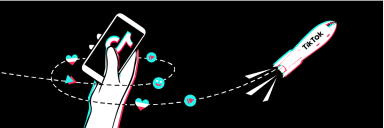Chinese demand for smartphones priced over 2,000 yuan kept rising by jumped 8.8 % from January to December last year, according to latest study of Nielsen Device Share (NDS), a Nielsen product that can track smart devices’ brand and model share in total market and new activate market.
The study said, among all smartphones that are currently being used, the market share of mid-range and high-end smartphones, which refers to smartphones priced over 2,000 yuan, increased to 45.7% from 36.9% in 2015. In contrast, phones priced below 2,000 yuan have experienced slight share shrink over the same period last year, indicating that with the rising disposable income of Chinese consumers, they are more willing to invest in higher-end digital devices.
“In China a user spends 170 minutes with smartphone in a day, which is higher than any other devices such as TV and PC. While a smartphone user on average opens up to 30 different mobile apps every day.” said James Gong, vice-president of Nielsen China, “The highly engaging behaviors also result in people choosing smartphones with better performance.”
He says the premiumization trend will keep going, as smartphones are embedded into people’s life in a deeper and more profound way.
“A good phone means not only better mobile experience, but also better personal day-to-day experience. Consumers are willing to pay extra for better user experience.” James added.
Market change requires domestic brands to adopt new capabilities
The study found that market share of foreign smartphone brands priced beyond 2,000 yuan has reached 38.03% out of total market in December 2015, in sharp contrast, their Chinese competitors only accounted for 7.66%. Furthermore, considering iPhone’s share has increased from 25.4% to 30.3%, the market left (which is Android and some other small operating systems) for domestic brands is actually more confined.
“As China’s smartphone market gradually become saturated, more smartphones are bought only due to replacement, which is a stark contrast to the high consumer demand in the past. Also, thanks to the successful implementation of “internet/ ecommerce strategy” as well as “value for money” strategy, share of domestic brands increased today and so are their market positions,” said James Gong. “However, all those result in Chinese consumers become more picky in buying new mobile phone, the drivers of market growth change to premiumization, players need to adapt. Failing to do so will face challenges in both margin and market share.”
Chinese smartphone manufacturers aim to take a bite out of foreign brands
Despite the dominance of foreign brands in high-end markets, there are winning Chinese manufacturers.
According to the report, Huawei, OPPO and vivo, all China’s home-grown brands, have seen obvious market share increase in smartphone priced beyond 2,000 yuan in December 2015 compared to figures 11 months ago, with Huawei jumping to 2.13% from 0.34%, OPPO rising to 2.48% from 1.37%, and vivo climbing to 1.64% from 1.21%.
“To cater to Chinese consumers rising demand for high-end phones, manufacturers need to further dig and proactively satisfy consumers’ potential needs, such as providing phones with functions of better communication, networking, shopping, entertainment, transportation and payment,” James Gong said.
“As smartphone is highly embedded into consumers’ daily life, a premium brand does not only manufacture quality products, but also guarantee good user experience. To achieve brand recognition does not only rely on promotional activities, or simply upgrading products specs such as enhancing camera pixels or CPU cores.”
The report showed that fingerprint identification, quick charging, high battery capacity, those features and user experience improving functions are looking after by Chinese consumers. The Nielsen report found that market share of smartphones equipped with fingerprint recognition technology increased to 25% in December from 11.46% in 2015. Share of smartphones equipped with 3000+mAh battery capacity grew to 19.50% in December from 14.98% in January, 2015.
“In the future, their demand will be more sophisticated and are in pursuit of better user experience, therefore, how to grasp consumers’ core demand, create products that meet their expectations, will be vital for smartphone manufacturers’ success,” said James Gong.
ABOUT NIELSEN DEVICE SHARE
Nielsen officially launched Nielsen Device Share (NDS) in November 2015, in China, in collaboration with TalkingData. Nielsen Device Share can track smart devices’ brand and model share in total market (devices in use) and new activate market (new active devices) to understand brand, model and configuration trends. Additionally, Nielsen Device Share is able to monitor the structure of total market, measure the performance of new models, provide APP using behavior and users’ profiles, analysis new activate market and brand potential energy, and also forecast sales volume of new models, which improve the market decision making of enterprise.
NDS is based on the big data panel including nearly 300 million smartphones and the scientific data calibration, which truly reflects the smartphone market to make sure the results accurate and representative, even though crosstabs, the sample is large enough.
NDS is updated on 10th each month, which allows speed and stability at the same time.


